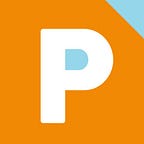Is Your Website Wheelchair Accessible?
Tackling Health Literacy in 2020
Access to clear health information has perhaps never been more vital than during a global pandemic. The constant stream of content about COVID-19 from various sources has left people of all health literacy levels overwhelmed and confused about how to make decisions in their daily lives. So it’s no surprise that the FDA says that health literacy is no longer just about making content easy to read, but also easy to find and easy to use.
Mounting legal implications surround health literacy as well. In the same way that a building can be sued for not having a wheelchair ramp, companies can be sued for creating websites that aren’t accessible to people with various health conditions.
The FDA is leading by example
Since “only about 12 percent of U.S. adults have the skills to manage their health and prevent disease,” the FDA Risk Communication team ensures that the content they produce for patients is easy to understand. This especially applies to heavily trafficked websites (like those about vaccinations), FDA-approved communications like Medication Guides for prescription drugs, and even FDA social posts. They also have several resources in place to ensure patients can access and understand health information, like a general hotline that patients can call with questions, and translation services for patients whose first language isn’t English.
Last year, the FDA implemented a new message-testing initiative, where patient-facing content was tested within the organization to ensure it was clear for patients. And earlier this year, they began their Patient Engagement initiative, public meetings where they seek patient perspectives on various diseases and their treatments.
What’s more, the FDA emphasizes that producing health content that’s easy to understand is especially important because of the stress that accompanies being sick. As Jodi Duckhorn, the Director of the FDA Risk Communication team explains, “Often when you’re unwell, you feel out of control. But asking questions actually enables you to take control of your health.”
The legal protection of health literacy
Pressure on drug companies to provide clear information is also on the rise. In 2017, there were over 800 website accessibility lawsuits filed in federal and state courts. By 2018, that number nearly tripled to 2,250.
Health literacy supports patients’ abilities to make educated decisions about their treatments (the legal notion of “informed consent”). Law professor and plain-language expert Christopher Trudeau explains that “by protecting and informing the patient, you’re actually better protecting the healthcare organization and the providers, so you can create this win-win.”
The P&P solution: Healthy Communications™
At Patients & Purpose, we focus on making patients better equipped to be in control of their health. That’s why we developed Healthy Communications, a holistic approach to health literacy that not only ensures that copy is easy to read, but also that the entire experience of accessing and using health information is patient-friendly.
Creating Healthy Communications has 4 basic tenets:
1. Make it accessible. First and foremost, patients must be able to access the information we are trying to relay to them. It must be in the right channel and in the right platform. If our patient population largely lives in inner cities and takes public transportation, the message would be better placed in a bus shelter, as opposed to in a radio spot during the weekday rush.
2. Make it usable. Once patients can access the communication, it needs to be easy for them to use. It must align with their physical and cognitive challenges, as well as their goals: what kind of information do they want about their condition? If we are building an app for a patient population with dexterity issues, the buttons need to be oversized and easy to manipulate.
3. Make it clear. Then, once patients can access and use the communication, we want to make sure they can understand it. It should be clear, concise, and actionable. More than writing at a certain grade level, we want to make it look easy to read. Is it scannable? Can users glance at the page and easily and immediately understand what we want them to know?
4. Make it resonate. Finally, all communications need to be grounded in language that patients actually use. By engaging patients in language exploration sessions, we ensure that any communication we produce uses language that rings true to patients and makes them feel heard.
Health literacy is good for brands
We know that patients and doctors engage more with materials that are easy to understand. Emails that patients can comprehend immediately have higher click-through rates (and subject lines that are easy to read yield higher open rates). Web pages that are easy to digest have increased page views from doctors. And patients are more likely to ask for a drug by name when they understand its potential risks and benefits.
We apply Healthy Communications to every piece we produce at P&P, for patients and healthcare providers alike. Just as patients need to be able to easily digest health content, doctors need the tools to have more productive conversations with their patients. So while we aim for a 6th-8th grade reading level when we write copy, health literacy has little to do with how educated someone is.
“There is a new emphasis on the inclusiveness of health literacy,” says Dr. Susan Andreas, Director of Health Literacy at P&P. “Just as cancer doesn’t care how much money you make or how educated you are, the emotional brain fog that can result from scary diagnoses is universal. So it’s critical that the content we create is clear and accessible for everyone.”
It couldn’t be clearer: for the protection of healthcare companies from legal trouble and FDA scrutiny, for the success of healthcare brands, and most importantly, for the benefit of patients’ health, a comprehensive application of health literacy is a must for all healthcare communications.
